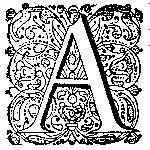An Anglo-Dutch Power Couple
Lady Katherine Stanhope (1609-1667) and Jan Polyander van der Kerckhoven (1594-1660)
DOI:
https://doi.org/10.51750/emlc19227Keywords:
Anglo-Dutch relations, status, diplomacy, finance, marriage, genderAbstract
The marriage of William II of Orange and Mary Stuart in 1641 has often been viewed as a social and dynastic alliance with far-reaching political consequences for the Houses of Orange and Stuart. The key appointments of the Anglo-Dutch couple Lady Katherine Stanhope and her husband Lord Heenvliet to supervise Princess Mary’s household have been seen as a deliberate power grab orchestrated by the couple themselves. This article argues a more nuanced view of their partnership, however, considering how intangible qualities such as status, motherhood, and widowhood shaped their diplomatic practices alongside more traditional advantages of political connections and access to wealth. The use of soft power and cultural exchange also shaped the couple’s reputation as they operated within the domestic realm of the princess’s household whilst juggling the political demands created by the exiled Stuarts and their supporters, highlighting the duality of their roles. Stanhope was also the wife of a Dutch diplomat and whilst appointed dame gouvernante and surintendant général respectively to the princess by Charles I, they operated without reference to Sir William Boswell, the king’s ambassador at The Hague until 1649. By examining concepts relevant to Stanhope’s agency, this article adds further perspectives to consider in relation to Anglo-Dutch diplomatic practice in the 1640s.
Downloads

Published
Issue
Section
License
Copyright (c) 2025 Katharine Carlton

This work is licensed under a Creative Commons Attribution-NonCommercial 4.0 International License.





